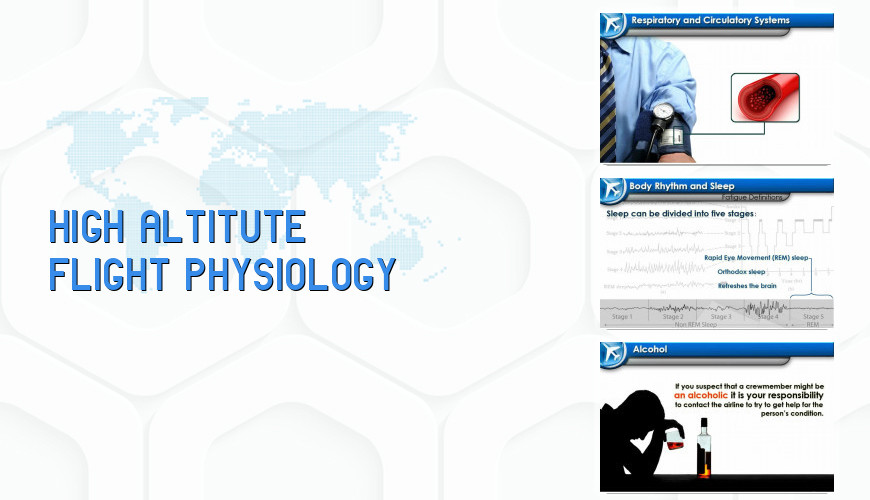
Course Information
This required course covers the following information in depth; A discussion of the components of the atmosphere to include a review of the gas laws. A description of the human respiratory and circulatory systems to include discussions on the human body components of these systems, anemia, hypoxia, hyperventilation, heart disease, the oxygen requirements at altitude, and Time of Useful Consciousness. A review of aircraft pressurization system, decompression sickness (DCS), the risks of temperature and radiation on high altitude operations. Human sensory systems to include, the nervous system, vision, sensory adaption, the effects of light and dark, hearing, equilibrium, and sensory inputs such as spatial orientation, visual illusions, empty field myopia, excess-“G”s, and the Coriolis Effect and human health and hygiene to include circadian rhythm, fatigue, body temperature, gastro-intestinal problems, tropical conditions and their effect on health, infectious diseases, intoxication and incapacitation in flight.
Content of the Course
| Slide | 155 | Duration | 01:19:45 | Exam | No |
|---|
- COURSE START
- BASICS OF FLIGHT PHYSIOLOGY – The atmosphere
- The gas laws:
- The law of diffusion
- Isa condition
- Respiratory and circulatory systems – Respiratory systems
- Circulatory systems
- Blood
- Anaemia
- Hypertension and hypotension
- The effects of high and low blood pressure on the body
- Controllable risk factors
- Coronary artery disease
- What are the risk factors for heart disease?
- Hypoxia
- Summary of oxygen requirements by altitude
- Time of useful consciousness (tuc)
- Hyperventilation
- Hyperventilation and hypoxia
- Aircraft pressurization system
- Decompression sickness (dcs)
- High altitude environment – Ozone
- Radiation
- Humidity
- Extreme temperature – Hot environment and hyperthermia
- Coldenvironmentandhypothermia
- MAN AND ENVIRONMENT – THE SENSORY SYSTEM
- Vision – Functional anatomy
- Anatomy and physiology of the eye
- Parts of eyes
- Light and dark adaptation
- inocular and monocular vision
- Distance estimation and depth perception
- Sunlight and its effect on the eyes
- Eye defects
- Hearing – Hearing loss
- Integration of sensory inputs – Spatial orientation
- Visual illusions
- Visual illusions associated with landing
- Slope of runway
- Black hole effect
- Rain on the windshield
- Atmosphere – lowcontrast environment
- Empty field myopia
- Vestibular illusions
- Somatogravic
- G-excess illusion
- Coriolis
- Proprioception sense – seat of pants sense
- HEALTH AND HYGIENE – Personal hygiene
- Body rhythm and sleep
- Fatigue definitions
- Body temperature
- Problem areas for pilots
- Gastro intestinal upsets – abdominaldistension
- Obesity
- Food hygiene
- Tropical climates
- Infectious diseases
- Intoxication – Tobacco
- Caffeine
- Alcohol
- Drugs and self-medication
- Toxic materials
- Incapacitation in flight
- COURSE END

